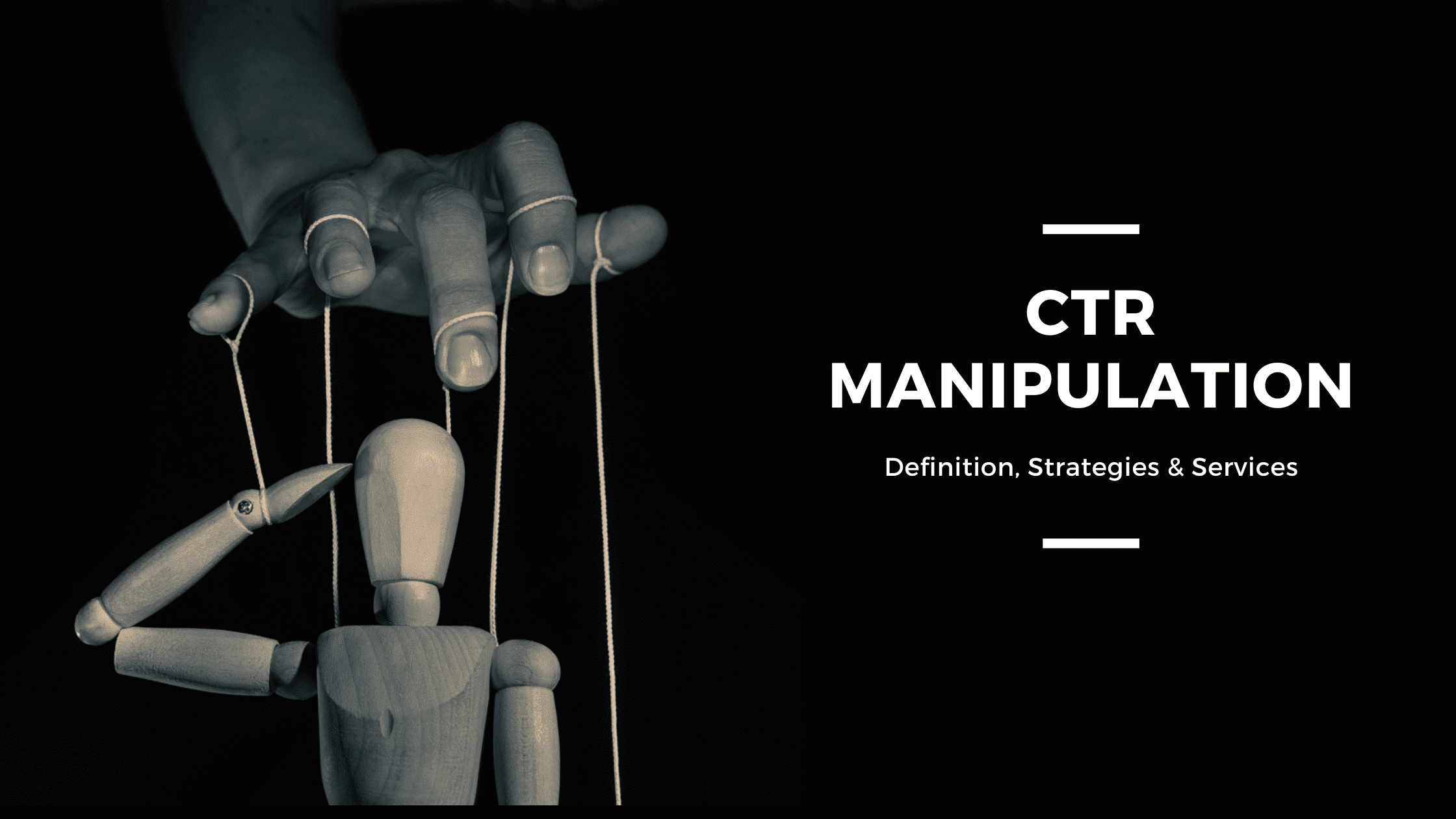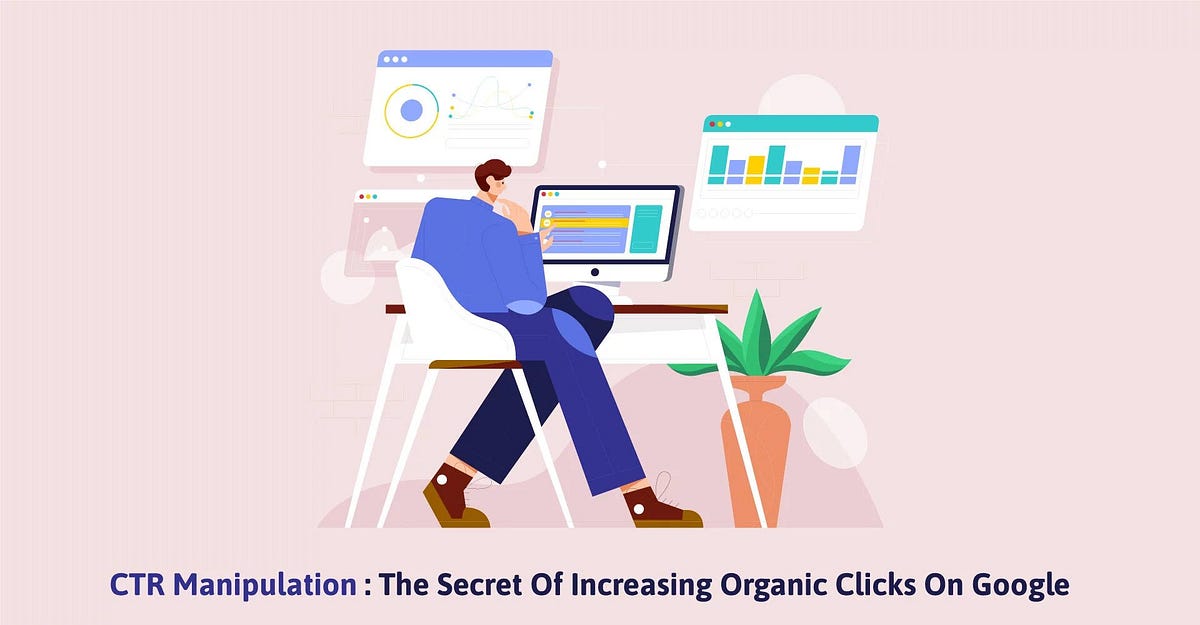Opening the Keys of CTR Control for Better ROI
The adjustment of click-through prices (CTR) presents an engaging possibility for marketing experts looking for to boost return on financial investment (ROI) By understanding the subtleties of CTR and its vital duty in driving involvement, specialists can use various techniques to optimize content effectively. From A/B testing to data analysis, the approaches for enhancing CTR vary and impactful. The true potential lies in uncovering the underlying behaviors that drive these metrics. What specific techniques can be employed to unlock this potential and ultimately transform project results?
Recognizing Click-Through Rate
In digital advertising, recognizing Click-Through Rate (CTR) is necessary for reviewing the effectiveness of on the internet campaigns. CTR is an essential efficiency metric that measures the percent of users who click a details link contrasted to the overall number of customers who watch the content. GMB CTR Manipulation. It is determined by separating the number of clicks by the number of impacts, then increasing by 100 to share it as a percentage
A higher CTR suggests that the material is involving and pertinent to the audience, while a lower CTR may recommend that the web content is not resonating or that the phone call to activity is inadequate. CTR functions as an indicator of the innovative components in marketing, including headings, photos, and overall messaging.
Recognizing CTR also helps in recognizing fads in time, permitting online marketers to refine their methods based on performance information. By assessing CTR across different networks-- such as e-mail projects, social media ads, and search engine results-- marketers can gain insights right into target market habits and preferences. Ultimately, CTR is a fundamental metric that can educate decisions to optimize project efficiency and enhance overall return on investment (ROI)
Importance of CTR in Marketing
Just how can marketing experts utilize Click-Through Price (CTR) to enhance their campaign performance? CTR is an essential metric that quantifies the percent of individuals who click on an advertisement or link compared to the total number of users that see it. A high CTR suggests that a project resonates well with its target market, properly capturing their interest and encouraging activity.
Comprehending the importance of CTR enables online marketers to gauge the significance and appeal of their messaging, creative properties, and overall approach. Examining CTR not only gives insights right into individual involvement however also aids in recognizing areas for renovation. Online marketers can make use of CTR data to improve their targeting, guaranteeing that promos get to the most ideal audience sections.
Moreover, CTR influences the top quality score in pay-per-click (PPC) advertising, affecting ad placement and expense efficiency. A well-optimized CTR can lead to decrease expenses per click and enhanced return on financial investment (ROI) Ultimately, tracking and boosting CTR is integral for marketing experts seeking to maximize their campaign performance and accomplish lasting development in an affordable landscape. By prioritizing this metric, companies can make data-driven decisions that improve their general advertising and marketing approach.
Strategies for CTR Optimization

One more effective method is A/B screening, where variations of ad duplicates, pictures, or calls-to-action are evaluated to identify which variations produce higher CTRs. This data-driven strategy enables companies to refine their messaging based upon real customer habits.
Making use of eye-catching visuals his explanation can also enhance CTR, as appealing graphics or video clips often tend to attract individuals' focus a lot more efficiently than message alone (GMB CTR Manipulation). Furthermore, using seriousness or scarcity techniques-- such as limited-time offers-- can produce a feeling of requirement, engaging users to act without delay
Moreover, maximizing landing web pages for mobile gadgets is crucial, as a raising number of customers access material via mobile phones. A smooth user experience fosters interaction and motivates clicks. Leveraging social proof, such as testimonies and testimonials, can develop trust and improve the probability of clicks, eventually driving far better ROI.
Evaluating CTR Information
Understanding CTR information is vital for marketing professionals aiming to boost their projects and optimize return on financial investment. Analyzing this data involves inspecting click-through rates across different networks, advertisement styles, and target demographics. By segmenting CTR information, marketers can identify which elements resonate with target markets and which require optimization.
A complete exam of CTR fads over time can reveal patterns that inform future strategies. Seasonal variants might impact engagement, suggesting the requirement Recommended Reading for customized messaging during height durations. Additionally, contrasting CTR data against market criteria can help analyze project performance, leading changes to enhance efficiency.
Marketers should additionally take into consideration elements affecting CTR, such as ad placement, duplicate, and visual elements. A/B screening various variations makes it possible for a much deeper understanding of what drives clicks. Additionally, integrating CTR information with individual behavior analytics gives insights right into the general customer trip, highlighting chances for further optimization.
Gauging ROI Effect
Gauging the effect of click-through prices on roi (ROI) is vital for marketing professionals wanting to validate their methods. By quantifying the partnership between CTR and ROI, organizations can determine which projects successfully drive revenue and enhance their marketing initiatives appropriately.
To begin this analysis, one need to establish a clear baseline for ROI, usually calculated as the internet revenue divided by the total financial investment. As soon as the standard is established, marketing groups can evaluate CTR metrics from various projects, noting just how changes in CTR impact total sales and profits generation.
Advanced analytics devices can additionally improve this procedure by segmenting information across different channels, index target market demographics, and project kinds. This granularity allows marketers to identify certain factors that either positively or negatively effect ROI.
In addition, it is crucial to think about the lag impact, where boosted CTR could not promptly translate into greater sales. Tracking efficiency with time can offer understandings into longer-term effect on ROI.
Eventually, a detailed understanding of how CTR control modifies ROI encourages marketing professionals to improve their methods, making certain optimum appropriation of sources and made best use of economic returns.
Conclusion

Comments on “Boost Website Traffic with Effective CTR Manipulation”